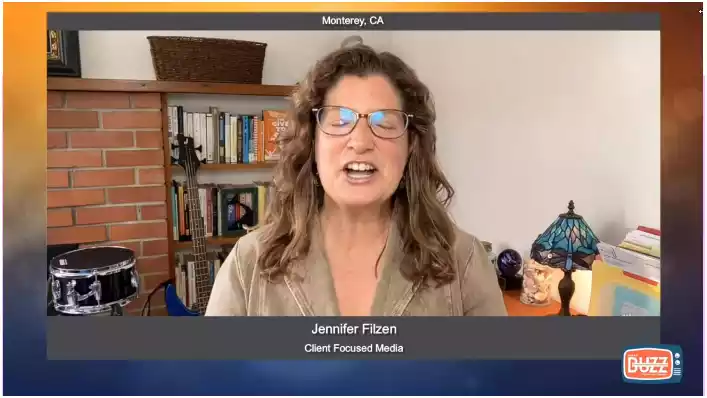Dynamics of Prior Authorization Rules | Essential Insights
Explore the significance, navigation, and dynamics of prior authorization rules in healthcare. Learn to optimize patient care and avoid penalties.

Navigating the complexities of medicare prior authorization can often resemble a journey through a labyrinth. Whether you’re a patient seeking necessary medical services or a healthcare provider striving to deliver optimal care, familiarity with the procedures and potential challenges of Medicare prior authorization is paramount. Let’s explore the nuances of this process and empower ourselves with the knowledge required to navigate it efficiently, ensuring that patients receive the care they need within the Medicare system.
Let’s begin!
Table of Contents
Understanding the Dynamics of Prior Authorization Rules
Securing prior authorization stands as a significant challenge for healthcare providers and medical institutions. This process involves insurance companies assessing the necessity of suggested therapies or medical services.
Adhering to prior authorization laws can be arduous and time-consuming, with violations carrying potential fines and denied claims. In this blog, we’ll delve into prior authorization regulations and the essential insights to ensure a smooth process.
Significance of Prior Authorization Regulations:
Beyond cost containment and fraud prevention, prior authorization ensures patients receive appropriate care. It allows insurers to evaluate the medical necessity of treatments, medications, or therapies. Additionally, it fosters adherence to correct medical care protocols and helps prevent the overuse of expensive services or medications.
Navigating the Prior Authorization Procedure:
Prior authorization entails a complex process involving phone calls, documentation, and electronic submissions. Healthcare professionals must gather relevant data, including prescription details, diagnosis codes, patient medical history, and proposed treatment plans. Subsequently, the insurer reviews this information, a process that may take days or weeks, and makes decisions based on medical necessity criteria.
Typical Standards in Prior Authorization:
Insurers impose various requirements regarding medical necessity for services, therapies, and medications. These standards, varying by plan and state, are grounded in clinical guidelines. Criteria such as patient age, diagnosis, symptoms, medical history, and treatment alternatives are considered. To prevent prior authorization denials, precise and comprehensive information submission is crucial.
Addressing Prior Authorization Refusals:
Refusals of prior authorization can disrupt patient care and result in financial burdens. Medical professionals must present additional evidence of treatment necessity and adhere to appeals procedures and deadlines to challenge refusals effectively. Patient advocacy groups or legal counsel may be sought for assistance in the appeals process.
I'm very thankful for Portiva who I know is looking after my practice while I'm gone the virtual assistants can manage prescription refills, documents they can triage patients and just kind of answer administrative questions and they can handle a lot on their own. But also, they're very good about contacting me if there's any emergency or anything I need to attend to. So I'm very thankful for Portiva they can help almost any provider almost anywhere and it really allows for some good work-life balance as I'm getting to experience right now at my family farm so I'm very thankful for Portiva and I'm very happy to use their services"

Board Certified Family Medicine Physician

Portiva's Virtual Medical Assistant - I have all the support I need. There's somebody checking my email, any patient messages. Patients are still able to schedule and handle any scheduling issues and any kind of billing that needs to still go through. Portiva hands handles it all for me. I have support i have somebody that I can access 24/7 pretty much. It's all very seamless. If somebody has an emergency or needs a medication called in. I know that the va's at portiva will handle that for me.

Board Certified Family Medicine Physician

Compliance with Prior Authorization Regulations:
Here, we delve into the best practices for navigating the complex terrain of prior authorization regulations.
Submitting Accurate and Complete Requests: The Foundation of Compliance
Submitting prior authorization requests devoid of errors or omissions is the cornerstone of compliance. Each request must paint a comprehensive picture of the patient’s medical history, treatment plan, and the necessity of the proposed intervention. From demographic details to supporting documentation, precision is key to circumvent unnecessary delays or denials.
Staying Updated on Insurer Rules: A Constant Vigilance
In the ever-evolving landscape of healthcare regulations, ignorance is not bliss—it’s a liability. Insurer guidelines undergo frequent revisions, necessitating a proactive approach from medical providers. Regular reviews of insurer regulations, encompassing changes in authorization requirements and covered services, are imperative to ensure compliance and mitigate the risk of claim rejections or penalties.
Documenting All Prior Authorization Interactions: Building a Paper Trail of Compliance
Behind every successful prior authorization lies meticulous documentation. Recording each interaction, from initial requests to communication with insurers, serves as a shield against potential disputes or audits. These records not only substantiate compliance during regulatory scrutiny but also facilitate process improvement by identifying recurring issues.
Monitoring Request Status and Proactive Follow-up: Navigating Roadblocks with Precision
In the realm of prior authorization, proactive monitoring is the antidote to potential roadblocks. Keeping a vigilant eye on request status enables timely interventions, preventing treatment delays or unwarranted expenses for patients. Additionally, diligent follow-up on denied requests unveils insights into potential shortcomings in medical necessity criteria, enabling informed appeal processes.
Training Staff on Compliance Procedures: Fostering a Culture of Excellence
Compliance with prior authorization regulations is a collective endeavor, necessitating alignment across all staff levels. From front desk personnel to seasoned physicians, comprehensive training on compliance protocols is paramount to minimize errors and misunderstandings. Regular educational sessions not only cultivate a culture of excellence but also fortify the foundation of compliance within the practice.
Importance of Prior Authorization in Healthcare:
Prior authorization mandates approval from insurers before treatment recommendations, ensuring adherence to medical necessity and insurance terms. It prevents unnecessary procedures, safeguards patients from harm, and maintains healthcare system viability.
Impact of Prior Authorization Laws:
Prior authorization laws affect patient experience and provider workload. Patients may face delays and stress, while providers may experience administrative burdens. Despite its importance, continuous optimization is necessary to mitigate these effects.
Simplifying the Prior Authorization Process:
Efforts to streamline prior authorization include ePA systems, uniform application of requirements, education on standards, and predictive analytics. These measures enhance efficiency, improve outcomes, and reduce care delays.
Conclusion:
Prior authorization regulations are integral to healthcare efficacy and patient care. Adherence to guidelines ensures timely, appropriate treatment delivery. By prioritizing compliance, healthcare professionals uphold standards and optimize patient outcomes within budgetary constraints.
To learn more about clinical guidelines that can enhance your medical practice. Discover more about Portiva and unlock a world of possibilities by visiting our homepage today!
- Significance of prior authorization
- The essential role of prior authorization
- Advantages of healthcare prior authorization
- How to handle authorization denials
- Streamline prior authorization process
- Managing prior authorization
- Benefits of prior authorization software
- Operating authorization denials
- Simplify patient care with prior authorization
- Monitoring the prior authorization
- Healthcare prior authorization regulations
- Handling prior authorization rejections
- Prior authorization criteria
- Prior authorization limitations
- Strategic planning for prior authorization
- Navigating prior authorization process
- Effects of prior authorization on healthcare
- Understanding the prior authorization
- How the prior authorization process works




